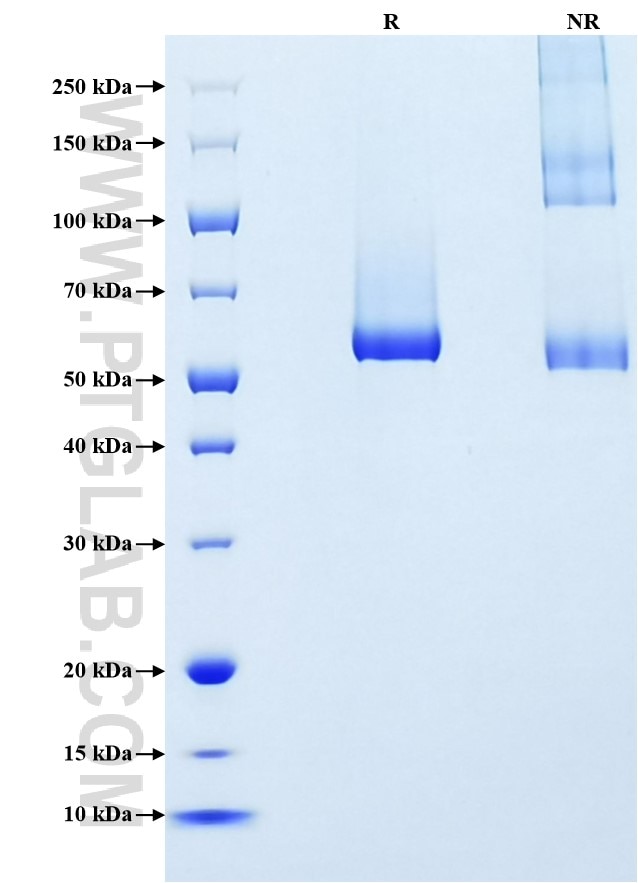Recombinant Human GPC1/Glypican 1 protein (His Tag)
Species
Human
Purity
>90 %, SDS-PAGE
Tag
His Tag
Activity
not tested
Cat no : Eg0737
Validation Data Gallery
Product Information
| Purity | >90 %, SDS-PAGE |
| Endotoxin | <0.1 EU/μg protein, LAL method |
| Activity |
Not tested |
| Expression | HEK293-derived Human GPC1 protein Asp24-Ser530 (Accession# P35052-1) with a His tag at the C-terminus. |
| GeneID | 2817 |
| Accession | P35052-1 |
| PredictedSize | 56.9 kDa |
| SDS-PAGE | 55-60 kDa, reducing (R) conditions |
| Formulation | Lyophilized from 0.22 μm filtered solution in PBS, pH 7.4. Normally 5% trehalose and 5% mannitol are added as protectants before lyophilization. |
| Reconstitution | Briefly centrifuge the tube before opening. Reconstitute at 0.1-0.5 mg/mL in sterile water. |
| Storage Conditions |
It is recommended that the protein be aliquoted for optimal storage. Avoid repeated freeze-thaw cycles.
|
| Shipping | The product is shipped at ambient temperature. Upon receipt, store it immediately at the recommended temperature. |
Background
Glypicans are a family of HSPGs that are attached to the cell membrane by a glycosyl-phosphatidylinositol anchor. Glypicans are considered to have the ability to modulate the activities of HBGFs. The expression of glypicans is regulated temporally and spatially during development, suggesting they are involved in development and morphogenesis. To date, six glypicans (GPC1 to GPC6) have been identified in mammals. GPC1 is most ubiquitously expressed in adult tissues. GPC1 promotes efficient signaling by HBGFs and plays a critical role in cell growth and differentiation. GPC1 is involved in tumorigenesis and angiogenesis, and is frequently overexpressed in several types of tumors including pancreatic carcinoma, breast cancer and glioma.
References:
1. Lund ME, et al. (2020). Adv Exp Med Biol. 1245:163-176. 2. Pan J, Ho M. (2021). Am J Physiol Cell Physiol. 321(5):C846-C858. 3. Tarbell JM, Cancel LM. (2016). J Intern Med. 280(1):97-113. 4. Takahashi Y, et al. (2021). Int J Mol Sci. 22(11):5780.

